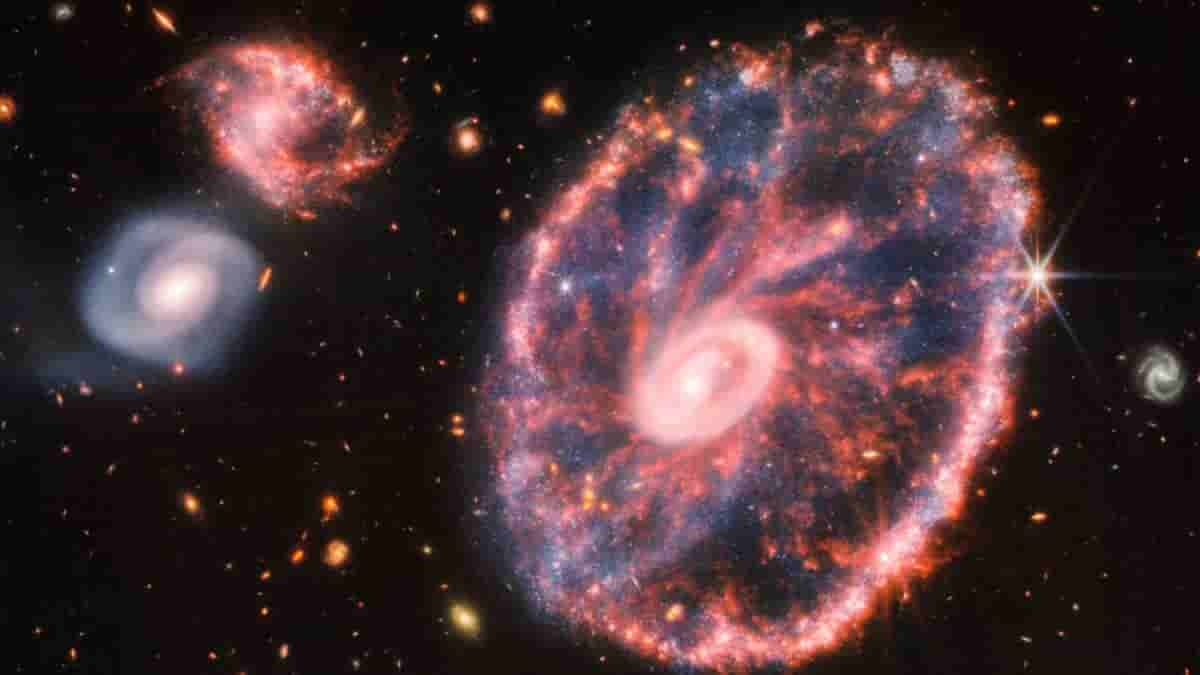NASA’s James Webb Telescope takes snapshots of the rare Cartwheel Galaxy

NASA’s James Webb Space Telescope has observed the Cartwheel Galaxy for new details about its star formation and the central black hole that remains dominant. Webb’s infrared telescope has produced images of the wagon-like galaxy situated 500 million light-years away in the Sculptor constellation to observe changes over billions of years of its lifespan.
There’s a high-speed collision between a large spiral galaxy and a smaller galaxy which changes the shape and structure of its galactic proportions. The Cartwheel Galaxy consists of two rings a bright inner ring and a surrounding colorful ring. These two rings were observed to be expanding outwards from the center of the collision. The core or central region harbors hot dust and facilitates the cluster of young stars. While the outer ring is observed to be expanding for 440 million years dominated by star formation via supernovas. The ring creates pressure during its expansion around the hot gas in the surrounding layer and initiates star formation. Webb’s telescope captured its detailed version while the Hubble’s images were obscured by the dust and gaseous clouds.
The Webb’s Near-Infrared Camera captured the details of the Cartwheel Galaxy which showed a clear outer ring harboring young stars via supernova explosions and is less obscured. The NIRCam data produces images colored in blue, orange, and yellow. The galaxy’s individual blue dots are young individual stars or pockets of star formation. The Near Infrared Cam also revealed a collection of dense stars situated in the central region while clumpy star populations can be located in the outer ring.
The central regions that are red in color are rich in hydrocarbons and other chemical compounds. The Cartwheel Galaxy has silicate dust much like dust found on Earth. According to Webb’s images, the astronomers will be able to understand the Cartwheel Galaxy’s past and future evolutionary stages.


